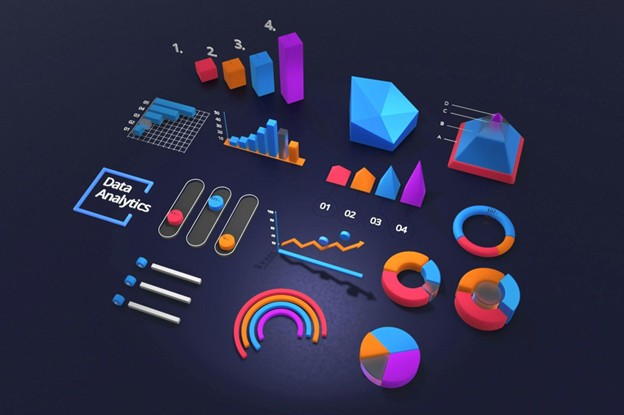
Data pours in from every corner: email servers, business transactions, social feeds, sensors, and customer interactions. This data is both a resource and a challenge. Traditional data processing methods, while reliable, often lag behind the pace and complexity of today’s data flow. Machine learning offers new techniques to keep up with the flood, unlocking smarter and faster data handling.
With machine learning, organizations can process more data, spot deeper insights, and reduce costly mistakes. The shift to smarter methods is well underway because machine learning boosts accuracy and efficiency in data processing. Nathaniel DiRenzo, a successful Data Solutions Architect, explores the role of machine learning in smarter data processing.
Core Benefits of Machine Learning for Data Processing
Machine learning techniques stand out for their ability to process data quickly while keeping results consistent. Old systems often crack under pressure, struggling with both the volume and variety of data. Machine learning steps in by identifying trends, detecting errors, and even making predictions in near real-time. This leads to smoother operations, less wasted effort, and higher trust in results.
Many companies now use machine learning to detect errors in large data sets before these issues affect daily business. These smart systems learn from past mistakes, making them even better at spotting similar problems in future data. Banks, for instance, use machine learning to scan transactions for fraud. The algorithm learns spending habits, quickly spotting anything unusual, and alerts staff before damage escalates.
Pattern recognition is another strength. Retailers apply machine learning to sales data to find buying trends. This guides pricing, promotions, and inventory planning. Predictive models can forecast demand so businesses have the right stock on hand. These examples highlight how machine learning brings speed, accuracy, and consistency where it matters most.
The process of cleaning and preparing data can be tedious. Raw data often contains typos, duplicates, missing entries, or inconsistent labels. In the past, staff handled this work by hand, reviewing endless spreadsheets and cross-checking for errors. Now, machine learning can automate much of this work. Algorithms scan through large amounts of data, spot inconsistencies, and correct them on their own.
Machine learning models can spot an unlikely phone number or email address that doesn’t match known patterns. The system flags these entries or corrects obvious errors, reducing the need for human oversight. With less manual review, teams make better use of their time and keep the error rate much lower.
This automation solves the speed problem while boosting trust in the data. Clean, well-labeled databases give other systems a strong base to work from. Decision-makers know they aren’t basing choices on flawed information. The result is a smoother flow from raw data to valuable insight.
Machine learning excels when it comes to picking out patterns and trends. These algorithms can sift through mountains of data and find links the human eye would miss. This talent fuels predictive analytics, where past data informs future planning.
“Companies track how customers move through their websites,” says Nathaniel DiRenzo. “Machine learning models analyze these clicks and taps, linking behavior to outcomes. They find which paths lead to a sale or sign-up and which ones lose attention.”
Marketing teams use these insights to update page design or run smarter ad campaigns. Forecasting is a natural fit for machine learning. In finance, models examine years of market activity and economic indicators. They predict future shifts and help traders spot risks before they turn into losses.
Supply chain managers use similar models to predict demand swings and adjust orders ahead of time. Classification is another role machine learning fills well. In healthcare, models sort medical images into groups, flagging those that might show disease.
This tool boosts early detection and supports those making tough clinical calls. With each new cycle, the model improves. It learns from new outcomes and adapts to stay accurate, offering deeper insight and better guidance with every use.
Key Steps for Integrating Machine Learning into Data Workflows
Adopting machine learning isn’t just technical but also requires a mindset shift. Success starts with clear goals, guiding each step from data selection to deployment. Teams must gather quality data, train models thoughtfully, and ensure ongoing performance. Each phase builds on the last, transforming workflows and decision-making through structured, purposeful change.
Success in machine learning starts with the basics: the input data. Poor data leads to bad results no matter how good the algorithm. Teams should focus on collecting data that is accurate, complete, and relevant to the problem they’re solving. This foundation supports every layer built on top.
Feature engineering comes next. This means shaping or picking out pieces of data that give algorithms clear, useful signals. For example, instead of feeding a model the date and time of a store sale, a team might extract just the hour of the sale to spot time-of-day trends.
“Good features make models easier to train and often improve results,” notes DiRenzo.
Teams start with simple measures such as cleaning, sorting, filtering and then move to drawing out new signals from the raw data. Feature engineering is equal parts experience and creativity. Teams test ideas, keep what works, and drop what sits idle.
Once data and features are set, the work shifts to building the model. Software runs through the input data, learning to connect signals with results. The model adjusts its internal steps to get as close as possible to the right answer.
Training can take hours or days, depending on both the data size and model choice. Teams must watch for overfitting, where a model learns sample data too well and makes mistakes on new input. Testing with data not used during training acts as a safety net, revealing how the model copes with real use cases.
If the trained model performs well, the next step is deployment. Here, teams feed live data into the model as work unfolds.
“A model is only as good as its upkeep. Teams monitor error rates and accuracy, retraining the model as new data patterns emerge,” says DiRenzo.
The process forms a loop. Training, testing, and deployment repeat as goals shift and new data arrives. This cycle keeps the system sharp and relevant.
Machine learning is reshaping the way organizations process information. It takes the grunt work out of cleaning, boosts pattern recognition, and underpins more accurate forecasting. The switch to machine learning allows teams to move quickly, avoid old errors, and work with rising volumes of data.
Integrating machine learning into data workflows isn’t just a technical upgrade but also brings ongoing benefits in the form of smarter, faster processing and deeper trust in results. As data volume grows, the need for smarter tools only increases.
Those who invest in machine learning today set themselves up for a future where their decisions rest on clean, timely, and insightful information. The value shows up in better data, and in the sharper decisions and smoother operations that follow.






